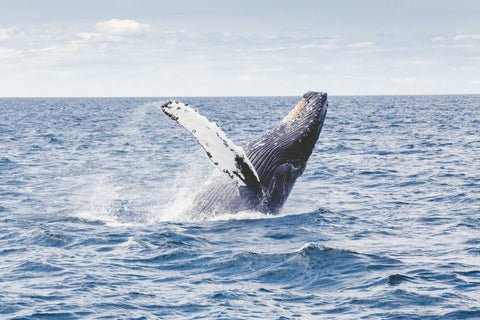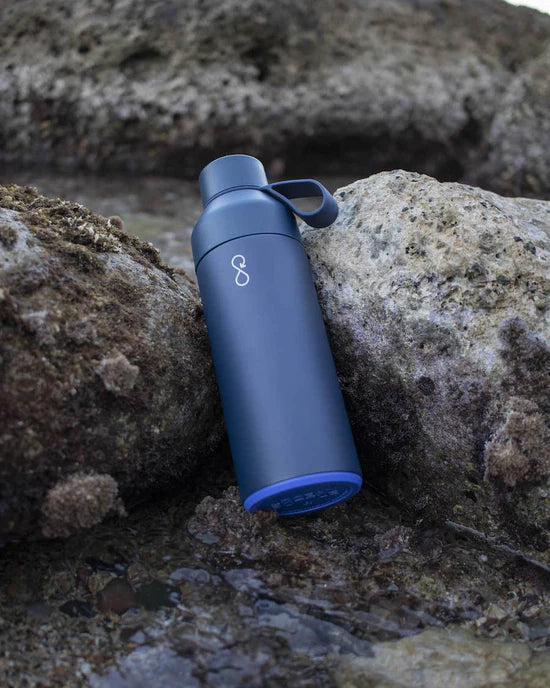Want to enjoy our oceans creatures without causing them any harm? With people travelling the world again, this handy little sustainable tourism guide will mean that you can be sure you’re visiting marine life in the most sustainable spots.
Let's face it - tourism will never be completely sustainable, as every industry has an impact in one way or another. However, the tourism industry can and is currently working towards becoming more sustainable and implementing as many sustainable practices as possible. Before the covid-19 pandemic hit, a massive 350 million people each year travelled to visit our oceans coral reefs - to snorkel, dive, sail, surf and much more. This is great news for the local coastal communities, with marine tourism supporting jobs, generating visitor spending in the local area and in some cases helping to fund marine protected areas and marine conservation.

However, marine tourism has many drawbacks. With more travellers seeking out these experiences there has been a surge in tour and dive agencies to meet the demand, often meaning that ethical and sustainable methods are sidestepped in order to earn quick money. Careless tourists, unregulated coastal development, overfishing and pollution also add to the detriment of critical marine habitats. This, along with climate change, is resulting in devastating impacts for marine ecosystems.
There are now many fantastic organisations, dive and tour companies that are solely focused on sustainable interactions with marine life. Here are some of the best places to spot those charismatic marine species that we love and care so deeply about, all whilst having the most minimal impact possible.
Whale sharks
Whale shark tours that involve touching, feeding or disturbing the natural habitat are harmful to them. They receive many injuries and cuts from boats, their natural migration and feeding patterns are heavily influenced and they do not receive enough nutrition from the food they are being fed. Getting too close to them, splashing and touching them disturbs and scares them, and remember; they are a protected species in many countries, meaning that it is actually illegal to harass them.
Donsol Bay is located on the island of Luzon and the whale sharks are not fed. They migrate here between December – May and only 30 boats containing a maximum of 6 customers are permitted on the bay at one time to protect the whale sharks.
Here, the tour guides educate the group on whale sharks and show great respect for the animals. They strictly adhere to conservation rules and standards, even if pressured not to do so by tourists within the group, and you get to see many whale sharks in their natural habitat.
Turtles
Discarded fishing nets, plastic, coastal development and tourism are all detrimental to turtles and their habitat. Heavy tourism on beaches and coastal development damages their nesting sites and eggs, and artificial lighting interferes with their natural behaviour. Turtle hatchlings hatch at night, and use the moonlight as a guide to make their way to the safety of the ocean. Artificial light on beaches and coastal developments disorientates them, meaning they head inland and perish instead.
I personally worked with Big Blue and their conservation techniques are impeccable. All the staff are very dedicated to training new divers and teaching you about respecting marine life. They run eco-days, do not permit any rubbish or cigarette butts to be thrown overboard the boats and are very firm about the no-touching rule. You’ll see a great selection of wildlife here - including hawkbill and green turtles, whale sharks, box fish and much more.
Humpback Whales

Humpbacks are undeniably one of the most loved marine animals, with many of us being fascinated by their behaviour. With this fascination, it’s no wonder that tourists travel in droves to witness their seasonal migrations; creating an economic backbone of numerous coastal communities. Despite this love and fascination, we are still hounding humpbacks to the brink of extinction.
Humpbacks are surprisingly tolerant of humans, but this doesn’t mean that we should be driving boats close to or over them - causing distress, disrupting their communication and feeding patterns. The Hervey Bay region was crowned as the world's first Whale Heritage site, and the fleet of boats here operate under extremely strict regulations, ensuring that the thousands of humpbacks that migrate here each year are protected.
Penguins

These flightless, waddling seabirds are very endearing and, somewhat, a little clumsy. Being flightless means they have a slightly more limited foraging range than their flying counterparts - resulting in the need for a predictable source of food (squid, krill or small fish) that is close in range. There are several factors causing the decline in penguin populations; entanglement in fishing gear, loss of habitat and humans overfishing their primary food sources.
Pohatu Penguins is a small, family-run business that works to protect white flippered penguins in Akaroa, New Zealand. They single-handedly saved this penguin colony from the brink of extinction, and now run ethical ecotours alongside their huge conservation and research efforts, which include predator trapping, monitoring, penguin rehabilitation and creating awareness. An expert guide, who works directly with Pohatu, will take you for a natural viewing of the colony. You'll learn about the conservation and preservation efforts of the penguins, and all of your money goes directly into helping them. These tours are safe, non-invasive and very educational.
Manta Rays

The largest of ray species, Manta Rays, are widely known for their calm, kind, intelligent and graceful demeanor. They are slow-growing animals that migrate, and have small pockets of populations that are distributed around the world. Despite their huge size, they are completely harmless. This, combined with the demand for their gills in the Asian market, makes them a huge target for fishing, alongside bycatch, harassment and injury from discarded fishing gear and vessel strikes.
The Manta Trust, the biggest organisation in place to protect, conserve and research Manta Rays, originally began in the Maldives. Since then, they have helped implement the Maldives Environmental Protection Agency (EPA) management plan in 2012. This ensures that sustainable tourism practices and strict regulations are continuously being enforced within Hanifaru MPA. These include SCUBA and fishing bans, scheduled alternation of entrance days for bigger liveaboard and resort boats, speed limits and tourist and boat limits. This helps to limit harmful interactions with Manta Rays, and reduce the overall disturbance they face from tourism. Manta Trust has a list of all their trusted partners on their website link so, if you’re keen to get an encounter with a Manta, please go ahead and follow their guidance.
Message in a bottle brought to you by OB resident Marine Biologist and Team Support Manager, Char.





